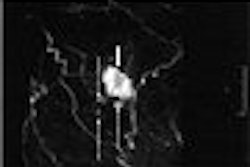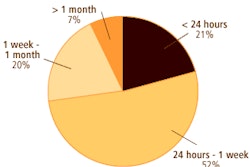It's not surprising news that lower-income individuals without health insurance are less likely to use preventive health services, such as breast or colon cancer screening. But uninsured adults with higher incomes are no more likely than the poor to avail themselves of health screening, even when they can afford it, according to a new study in the Journal of the American Medical Association.
Dr. Joseph Ross and colleagues at the Yale University in New Haven, CT, analyzed data for nearly 200,000 uninsured and insured U.S. adults, ages 18-64. The data for their cross-sectional study included all 50 states as well as the District of Columbia. The 16 self-reported measures included the use of mammographic screening and colon cancer screening (fecal occult blood test, sigmoidoscopy, colonoscopy).
"Evidence concerning how income may compensate for lack of insurance can provide insight about how adults might use out-of-pocket funds to purchase healthcare services…. This issue is particularly relevant as the federal government promotes high-deductible insurance programs coupled with health savings accounts," wrote Ross, who is from the department of internal medicine at Yale's School of Medicine. His co-authors are from the School of Epidemiology and Public Health (JAMA, May 3, 2006, Vol. 295:7, pp. 2027-2036).
According to the results, uninsured adults were more likely to be poor, young, male, black, Hispanic, single, self-employed or unemployed, and lack a college education, and self-reported in good or fair health. Lower-income adults ($15,000 or less reported annual household income) shared many similar traits but were more likely to be female.
Higher-income ($75,000 or more) uninsured adults were significantly more likely to be young, men, black Hispanic, and self-employed, and considered themselves in good health.
Among cancer prevention services, 76% of all the respondents said they used breast cancer screening. Seventy-nine percent of insured women said they had undergone screening mammography, compared to 52% of uninsured women. Percentages for screening compliance based on income ranged from 63% for low income to 83% for high income.
For those with an income level between $25,000 and $35,000, 72% adhered to breast cancer screening guidelines. With a $10,000 jump in income, 78% said they routinely underwent testing.
In terms of colorectal cancer, overall 51% of eligible adults used colorectal cancer screening. Fifty-four percent with insurance answered affirmatively versus 29% without insurance. Thirty-eight percent in a low-income bracket underwent colon cancer screening; 61% in a high-income bracket did the same. Among those earning $35,000 to $49,999 a year, 50% complied with screening guidelines. Among adults earning between $50,000 and $74,999, 54% said they had been screened.
"Health insurance and annual household income were both strongly associated with use of recommended healthcares services," the authors wrote. However, they found that "increased income did not significantly increase the likelihood of uninsured compared with insured adults receiving colorectal cancer screening (p = 0.33), while increased income significantly decreased the likelihood of uninsured compared with insured women receiving both cervical and breast cancer screening (p < 0.001)."
The group derived several conclusions from their study. First, a high number of uninsured and lower income adults do not adhere to health guidelines. More significantly, even among high-income adults, lack of insurance was associated with a decreased use of healthcare services. In addition, these same uninsured adults are not convinced that health recommendations are beneficial enough to either enroll in an insurance program or pay for them out-of-pocket.
In an e-mail interview with AuntMinnie.com, Ross commented on how these results jibed with a 2004 study, which found that the American public was enthusiastic about cancer screening and were "firmly committed to it" (JAMA, January 7, 2004, Vol. 291:1, pp. 71-78).
"Interestingly, the data for that paper, and the data used in (the current) paper, were both collected in 2002, so I don't think it reflects a societal change in attitude," Ross explained. "I think there is always going to be discrepancy between what people say and what people do. In that important (2004) paper, people were asked if it was irresponsible not to be screened, while we examined whether people -- who we expected to be using out-of-pocket funds -- purchased recommended healthcare services. You could say that (the 2004 study) examined whether people talk the talk, whereas we examined whether people walk the walk."
Ross also commented on whether his group's results may have had an impact in the lack of public enthusiasm for freestanding imaging-based centers designed to offer screening services to asymptomatic patients.
"One of the possible explanations for our findings is that adults who are uninsured may have chosen not to purchase insurance because they do not believe that healthcare services covered by insurance are effective and valuable enough to, in effect, 'prepay' for," he wrote.
While people may be willing to spend money on more "direct benefit" services (massage, yoga classes), paying for an imaging exam may inspire people to truly consider the cost-to-benefit ratio, he stated.
"Perhaps only the wealthiest individuals, who are already insured for traditional cancer screening tests, would have both the means and the will to utilize pay-per-use screening, such as CT," he added. "Unfortunately, those same individuals are likely to have a better understanding of the expected benefits of the test and recognize that the cost versus benefit of the test is steep and hence may not be of value."
Ross' group suggested that healthcare policymakers bear in mind that not all uninsured adults are low-income, and that more educational strategies may be necessary if the public is unclear on the benefits of preventive health services.
By Shalmali Pal
AuntMinnie.com staff writer
May 3, 2006
Related Reading
Breast cancer survivors often forgo annual mammography, April 26, 2006
Most Americans still skip colon cancer screening, March 8, 2006
Public enthusiastic for cancer screens: U.S. survey, January 7, 2004
Is your preventive imaging program responsible? November 24, 2003
AmeriScan closes its doors, November 3, 2003
Copyright © 2006 AuntMinnie.com



















